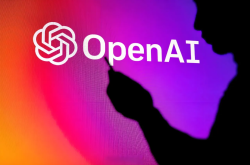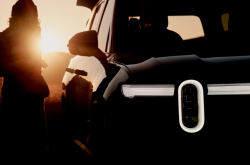Curved Screen or "Facial Expressions"? ——The Facial Design of Humanoid Robots
![]() 11/10 2025
11/10 2025
![]() 349
349
Produced by Zhineng Technology
Following Tesla's announcement that its humanoid robot, Optimus, will incorporate an OLED facial display, and particularly after Xiaopeng's adoption of a 3D curved screen, the robotics industry has begun exploring new avenues in designing "robot faces." The integration of flexible curved screens not only transforms the robot's visual appearance but also potentially reshapes the dynamics of human-machine interaction.
From both a technical standpoint and an interaction experience perspective, the incorporation of OLED curved screens in the head design of humanoid robots can elicit either pleasant or uncomfortable (fearful) responses.

01
From Shell to "Facial Expressions": The Advent of Curved OLED

In the initial stages of robot design, the face was often regarded as a "non-essential component."
Engineers concentrated more on joint servos, control systems, and sensor integration, while the face served merely as a decorative feature.
However, after Tesla proposed equipping humanoid robots with "communicative faces," display technology began to be formally integrated into robot structural systems at various interaction levels. The head of Tesla's Optimus robot showcases a typical hemispherical curved structure, reminiscent of the human skull, with intricate curvature variations.
Traditional LCD displays, which require backlighting, are thicker, and cannot bend, are ill-suited to conform smoothly to this curved form. OLED's self-emissive property provides inherent advantages in terms of thinness, flexibility, and power efficiency.
Samsung Display is slated to supply Tesla with an 8-inch OLED display, adhering to this design rationale: achieving large-curvature conformity, lightweight installation, and minimal heat emission within the confined head space.
Technically, curved OLEDs not only address aesthetic concerns but also open up new avenues for information expression.
OLED pixels offer high dynamic contrast and nuanced grayscale, enabling natural transitions in facial expressions and lighting effects within the same area—a crucial aspect for mimicking human facial emotions. When combined with cameras and AI recognition algorithms, robots can dynamically adjust display areas during conversations to exhibit expressions like "smiling," "blinking," and "gazing."
More than just a screen, it functions as the robot's "visual language module." From a structural engineering perspective, the thinness of the OLED panel reduces the overall center of gravity of the robot head, aiding in motion balance control.
Compared to anthropomorphic expression mechanisms that necessitate complex mechanical drives and silicone skins, the integration of curved screens is simpler, more consistent, and easier to control for mass production, representing an optimal solution in systems engineering.
02
From Display to Empathy: The Value of Human-Machine Interaction
The crux of humanoid robot head design lies not merely in making it "look human" but also in ensuring it is "understood by humans." The incorporation of curved screens extends human-machine communication from mere verbal commands to instant visual feedback.
In industrial settings, displays can function as status indicators and task progress feedback tools.
When robots undertake assembly, handling, or other tasks, screens can intuitively display operational information such as task progress, operational status, or warning alerts. Compared to traditional voice announcements or light signals, screen feedback offers greater clarity, reducing the risk of information misinterpretation.
In service, companionship, or educational scenarios involving human interaction, OLED screens play a more emotional role by presenting "emotions" through anthropomorphic dynamic expressions—not genuine emotions but visual signals designed to bridge the psychological gap in human communication.
Humans are more inclined to trust AI systems that provide expressive feedback, a mechanism driving investment from Tesla, humanoid robot manufacturers, and display technology firms.
The debate over whether "robots need a face" persists, with some arguing that robots should maintain a mechanical appearance to avoid the "uncanny valley" effect—where robots appear almost human but not quite, causing discomfort.
Compared to expensive and intricate bionic facial systems, curved OLED displays offer flexible expressions at a lower cost, representing a "functional aesthetics" solution that enhances interaction efficiency while mitigating the risks of excessive anthropomorphism.
In terms of cost, the mass production prices for curved OLEDs have seen a significant decline.
Currently, a 30-inch curved OLED panel retails for several thousand yuan, a fraction of the cost of bionic facial systems that can run into tens of thousands.
For Tesla, aiming for mass production, this approach offers both economic and consistency advantages. If Optimus meets market expectations of million-unit shipments, OLED screen standardization and modular design will become pivotal production foundations.
Curved screens provide a platform for future functional expansions.
Through hardware-software collaboration, the display area can double as a sensing window—embedding cameras, infrared sensors, or micro-projection modules to equip robots with dual functions of "visual perception" and "emotional expression" beyond mere facial displays.
This composite trend marks a significant stride for humanoid robots in their transition from mechanical forms to embodied intelligence.
Summary
When humans first equipped robots with "moving" faces capable of communication, curved OLED displays marked a significant leap forward in humanoid robot technology.







